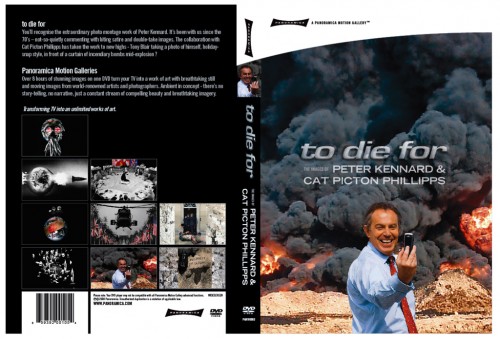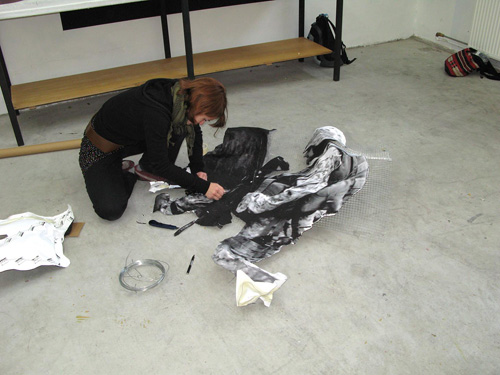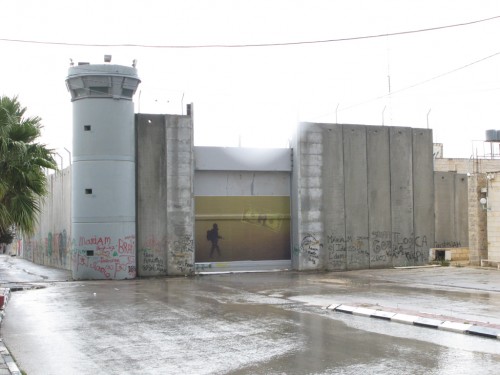Age of Terror : Art since 9/11 EXHIBITION AT IMPERIAL WAR MUSEUM
2007
pigment ink on newspapers
showing at the Imperial War Museum’s exhibition Age Of Terror : Art since 9/11
25th Oct 2017 – 28th May 2018
in good company with Jenny Holzer, Ai Wei Wei, Alfredo Jaar
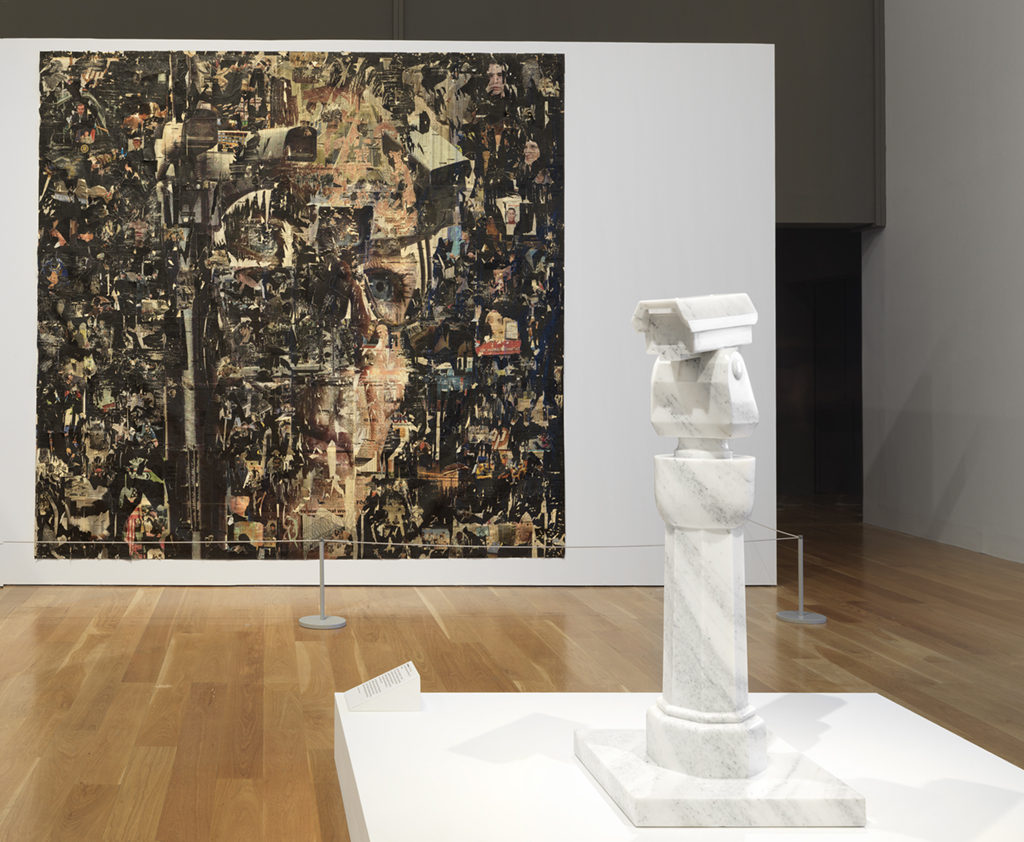
Exhibition view of “Age of Terror: Art Since 9/11”, running at IWM London from 25th October 2017 – 28th May 2018.
Gallery view with artworks by Ai Weiwei and kennardphillipps
Photographed 31st October, 2017.

Exhibition view of “Age of Terror: Art Since 9/11”, running at IWM London from 25th October 2017 – 28th May 2018.
Gallery view with artworks by Ai Weiwei, Alfredo Jaar and kennardphillipps
Photographed 31st October, 2017.
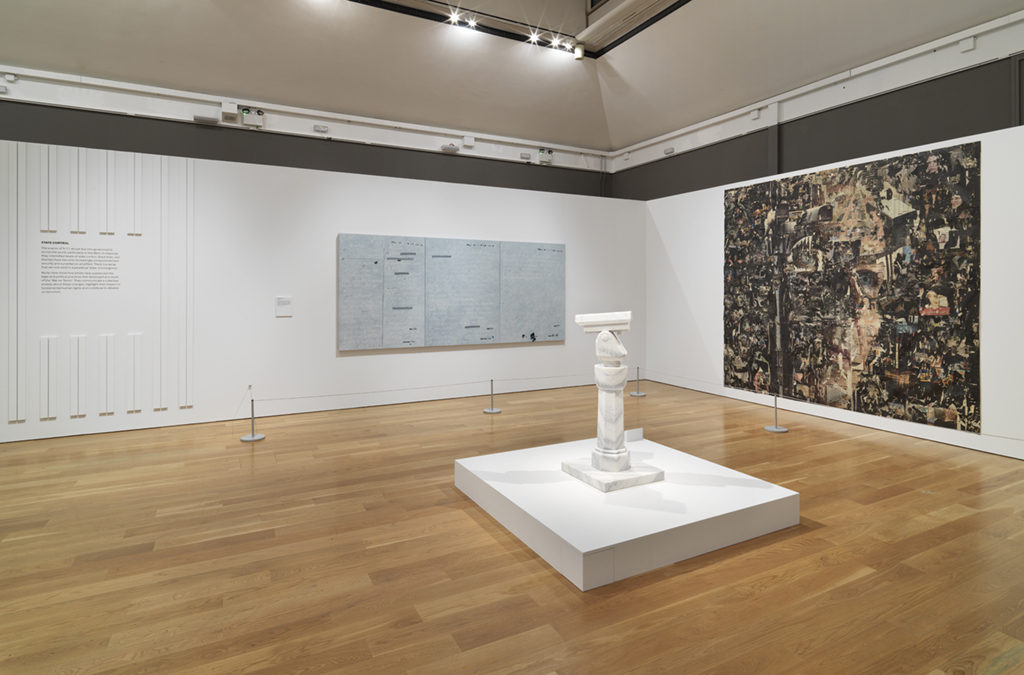
Exhibition view of “Age of Terror: Art Since 9/11”, running at IWM London from 25th October 2017 – 28th May 2018.
Gallery view with artworks by Ai Weiwei, Jenny Holzer and kennardphillipps
Photographed 31st October, 2017.
Head of State 2007
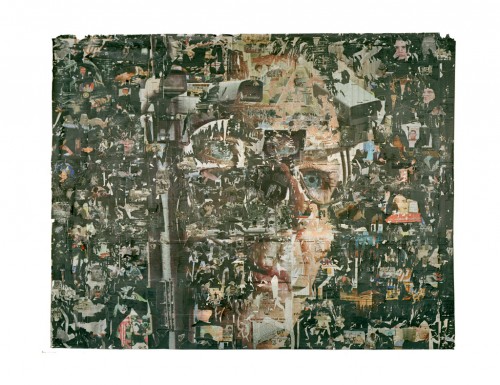 280cm x 300cm pigment ink, on newspaper, on newsprint with UV gel medium topcoat
280cm x 300cm pigment ink, on newspaper, on newsprint with UV gel medium topcoat

Exhibition view of “Age of Terror: Art Since 9/11”, running at IWM London from 25th October 2017 – 28th May 2018.
Gallery view with artworks by Ai Weiwei and kennardphillipps.
Santa’s Ghetto, Bethlehem 2007
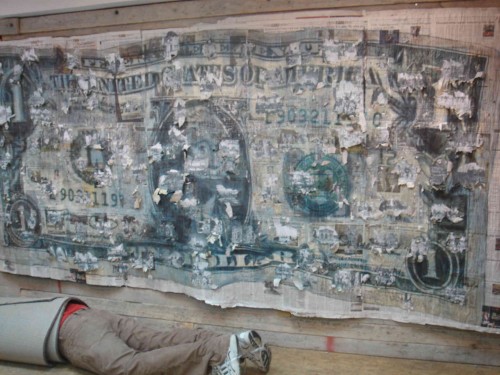
we’re still smoking the jordanian ‘rizlas’ johnny got us from the local shop – their the purest smoke, no glue! anyone know how to import them? We haven’t put up any pictures of our palestinian friends here for fear that they’d get hassled by the israeli authorities – but we think of you lot a lot!
some of our prints next to Sulheiman Mansour’s sculpture of cracked mud – we met Sulheiman, he’s a beautiful artist, done some radical work, he told us of a teahouse he opened for a day in the threatened and abandoned heart of Hebron where the palestinian citizens are terrorised by the young soldiers of Israel and the now present israeli settlers who have been ‘settled’ in the centre of the major palestinian city of Hebron. The palestinians shops and houses are still there but abandoned, under threat from israeli’s, and down there in the heart of the old city Sulheiman and a band of artists opened a teahouse to sit drink tea and discuss anything with regular citizens, israeli troops and israeli settlers. He described it as a successful attempt to start dialogue between whoever came along. Sulheiman is a driving force at the Arts Academy in Ramallah.
We walked down those streets in the heart of Hebron, the palestinian people had to erect cages to cover their streets to protect themselves from missiles being dropped by israelis who occupy the upper floors of the buildings.
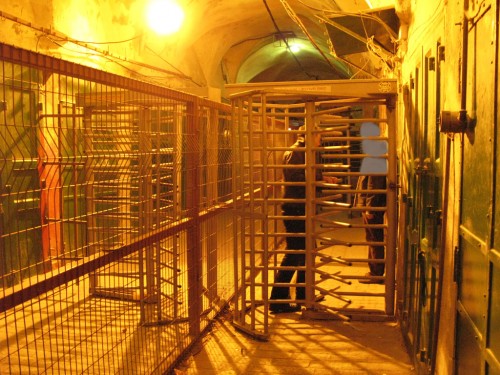
checkpoint at exact centre of Hebron to stop palestinians from freely accessing their mosque on the other side
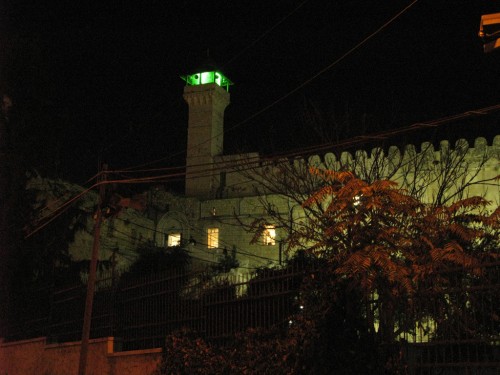
the mosque. This is where the israli occupation of Hebron began, about 10 years ago a group of israeli settlers entered this mosque and shot dead more than 40 palestinian worshippers. From that point on the state of Israel declared it an no go area, state of emergency and encircled it with 4000 israeli troops, after a year Israel lifted the no-go status but left the soldiers in place and began placing israeli settlers in surrounding houses, the state invited the settlers to use the mosque as their place of worship which they do. The Israeli settler population that inhabit the area around the mosque number only 150 people but they have a school. Many choose to sleep outside the city in neighbouring settlements but dutifully bus in every day under military escort in order to occupy the area. 4000 soldiers provide ‘security’ for this little group of families. The palestinian citizens who had houses and shops in the area have been harassed by the soldiers, which is severe, to a point where most dwellings belonging to them lie deserted. The Palestinian Authority runs an incentive programme that allows free electricity and water and low rent to any palestinian willing to live in these streets, only the very desperately poor take up the offer. Palestinians are allowed to use a small part of the mosque at certain times if they are willing to face the checkpoint that surrounds it.
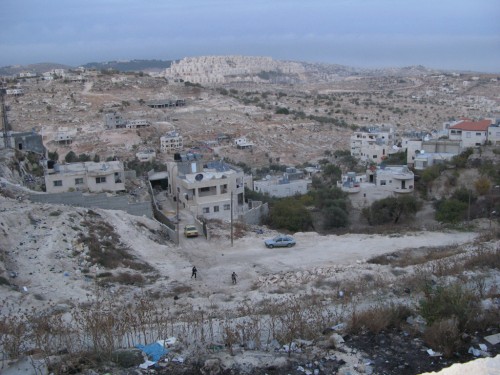
the mad military aesthetic of the israeli settlement. we would see this one from Bethlehem on our walk home from the Ghetto each night. it’s been built in the last 10 years
Forms of Resistance:Artists and the desire for social change from 1871 to the present. 2007
Forms of Resistance was a large show at the Vanne Abbe Museum, Eindhoven, Netherlands, for which we remade soldier#1 as a billboard and showed the STOP protest posters surrounding the footage from Lakenheath airbase.
The exhibition Forms of Resistance shows that ‘art and resistance’ are both timeless and universal. Although politically engaged works often put content first, this exhibition shows that art is an outstanding method of transforming content using form.
The exhibition draws on four historical events: the Paris Commune (1871), the Russian Revolution (1917), the Prague Spring (May ’68) and the world after the fall of the Berlin Wall (1989). This division does not pretend to be historically exhaustive but shows how resistance through the centuries has been repeated and revived, and has not been merely limited to social problems of a national nature. Socially conscious artists are often part of a larger movement or organisation, such as the Futurists, Constructivists, Bauhaus, Atelier Populair, Brigadas Ramona Parra or the Angola Committee in the Netherlands. There are also photograph and video collectives, which were particularly prevalent in the 1970s and highlight abuses on every continent. Other people, such as John Heartfield, Adrian Piper, Hans Haacke, Valie Export and Sanja Ivekovic, work alone. Marco Scotini’s Disobedience archive, which contains a collection of manifestations of civil disobedience, provides a social platform for related yet independent forms of protest all over the world.
Artists and graphic designers have emerged as idealists, accusers, underground activists, guerrillas, anarchists or propagandists at key moments throughout history. Forms of Resistance shows how artists through the ages have used their talents to react to society. Through the explicit political and social context of their art, citizens and governments are addressed directly. It is not so much an act of artistic recognition as a political protestation or an open declaration of sympathy.
Blairaq 2007
Blairaq
pigment ink and pva on newspaper
300cm x 600cm
Leonard Street Gallery, London, Uk 2007
Antennae 2007
pigment ink on newspaper
350cm x 300cm
Houston Centre of Photography, Texas USA 2007.
The work is a portrait of George Bush printed across 58 copies of the Houston Chronicle torn through to reveal images of the destruction of the Iraqi people and their landscape.
to die for DVD
New Statesman Christmas Card
Vrije Akademie, Den Haag, Netherlands, 2007
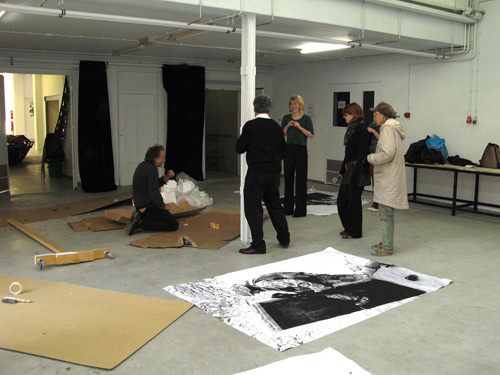
we ran a workshop at the free academy alongside the show, GreenZone/Red Zone, art students and regular citizens turned up to cut up and experiment with a print of the soldier kicking the door of an Iraqui's home - we had used the sme image in making Soldier #1
Who’s paying for this?
print on apartheid wall around/ in bethlehem
palestine2007

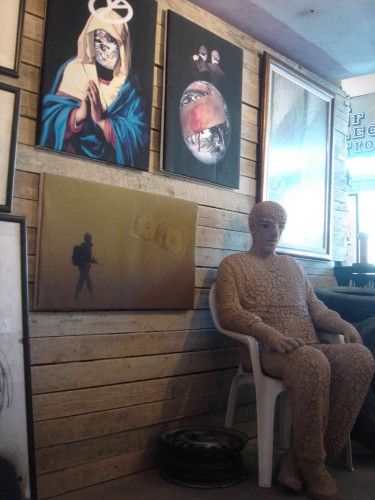
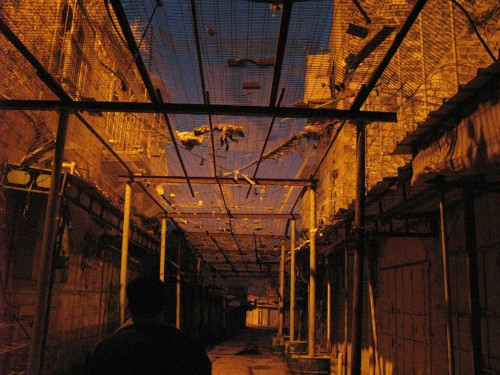
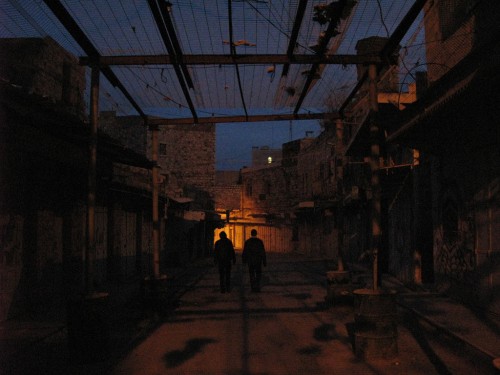

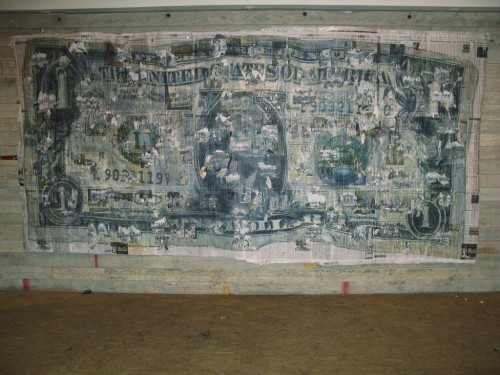
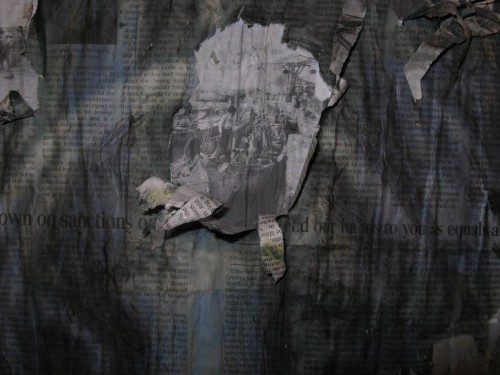
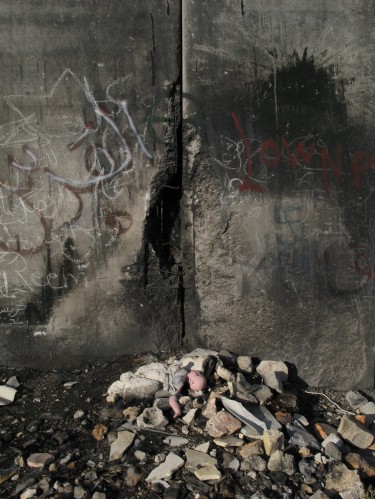
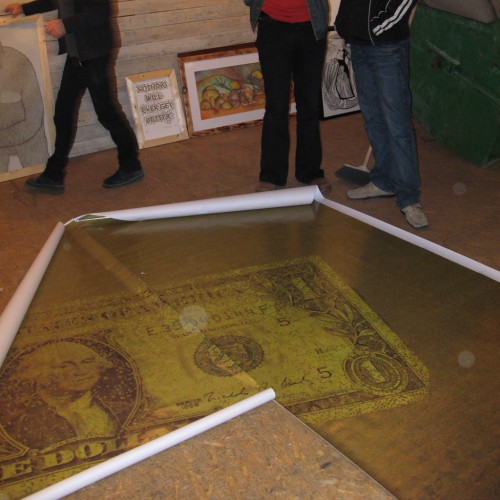
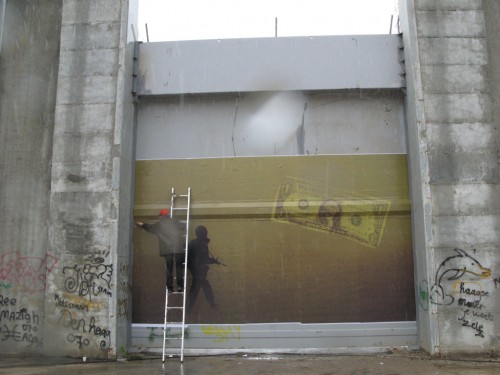

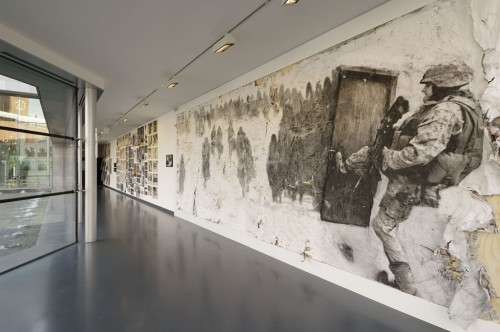

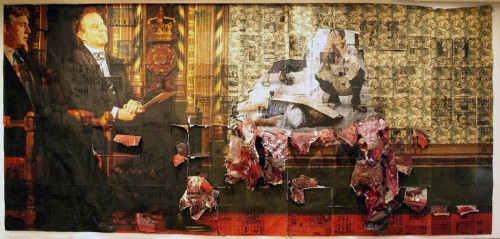
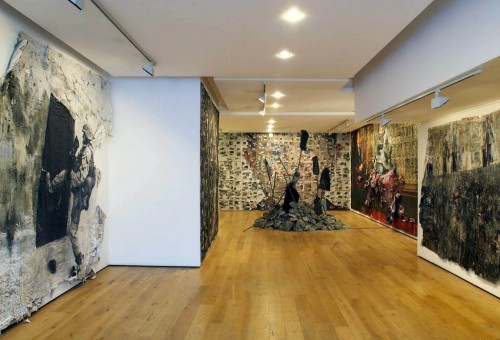
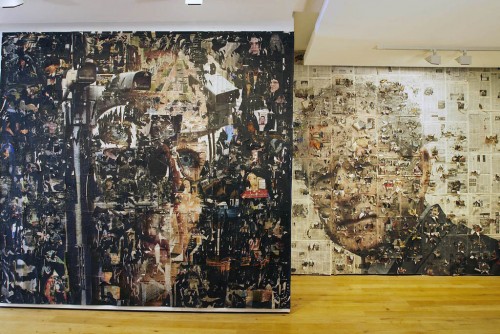
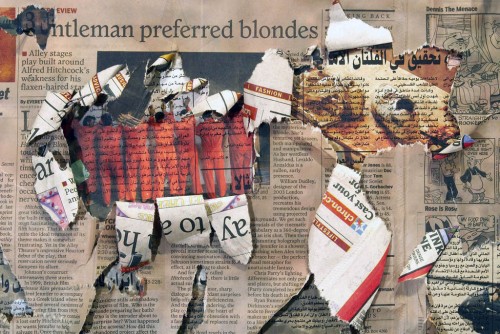
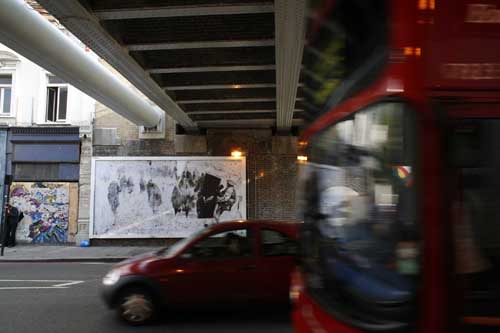
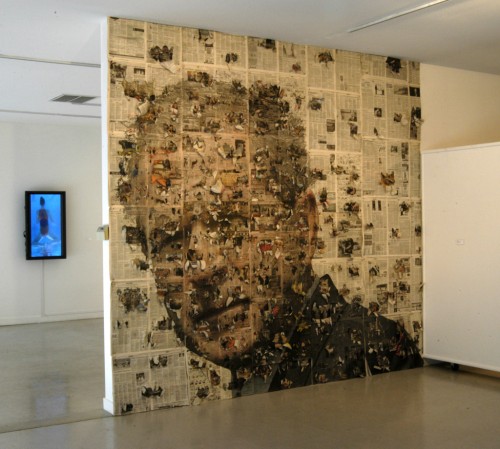 Iraq Destroyed
Iraq Destroyed